Paul Catania | July 6, 2021 | Car Accidents
According to some studies, car accident victims have an increased risk of developing PTSD (post-traumatic stress disorder). Traffic accidents have become the leading cause of PTSD since the Vietnam War. It is estimated that nine percent of accident victims who survive a serious car crash develop PTSD symptoms.
Therefore, if you were involved in a car accident, you could be experiencing PTSD. Understanding more about PTSD and its symptoms can help you know when to seek medical treatment after a car crash.
What is Post-Traumatic Stress Disorder?
PTSD is a diagnosable mental health condition. The disorder impacts individuals who have been through a traumatic event. In most cases, the traumatic event resulted in life-threatening situations.
Examples of traumatic events that can cause a person to develop PTSD include:
- Serving in the military in a war zone or combat
- Sexual assault
- Violent acts
- Natural disasters, including earthquakes, floods, fires, tornadoes, and hurricanes
- Motor vehicle accidents, including car crashes, truck accidents, pedestrian accidents, motorcycle accidents, and bicycle crashes
- Witnessing the death or traumatic injury of a loved one or family member
A person with PTSD may experience debilitating symptoms. In some cases, PTSD can be more debilitating than the person’s physical injuries sustained in the car accident.
How Do You Know if You Have PTSD After a Car Accident?
PTSD symptoms can be described as:
- Re-experiencing the event
- Reactivity or arousal symptoms
- Avoidance symptoms
- Mood or cognition symptoms
If you have PTSD, you experience symptoms for at least a month or longer. The symptoms may not appear immediately after the car accident. It could take weeks, months, or even longer for you to develop symptoms.
Doctors diagnose PTSD by evaluating the person’s symptoms. Symptoms that a car accident victim might experience include:
- Fear of sirens or loud noises similar to the sounds of emergency vehicles
- Flashbacks of the car crash
- Nightmares and night terrors
- Suicidal thoughts or negative thoughts about hurting yourself
- Refusing to ride in a vehicle or drive a car
- Having no interest in the activities you enjoyed before the car wreck
- Being easily started or feeling like you are on the edge
- Avoiding places, people, sounds, and other things that remind you of the car crash
- Experiencing severe mood swings, depression, angry outbursts, and other emotional distress
- Changes in your eating or sleeping habits
- Withdrawing from family, friends, and society
It is important to seek medical care if you experience signs of PTSD after a car accident. If you do not receive treatment for the disorder, the symptoms may become worse. Eventually, you may be unable to perform daily activities, work, go to school, or care for your family.
What Treatments Do Doctors Prescribe for Post-Traumatic Stress Disorder?
The treatments used for PTSD depend on the severity of the symptoms, the type of symptoms, and the person. In addition, some people respond to specific forms of treatment better than other forms of treatment.
Medications can help control PTSD symptoms. In addition to medication, physicians often prescribe counseling and therapy. Therapy may include cognitive, behavioral, and psychotherapy or a combination of therapies.
The goal is to learn to identify triggers for PTSD symptoms and learn coping techniques. Unfortunately, there is no cure for PTSD. However, a person can learn to manage the symptoms of PTSD and may eventually overcome the symptoms through counseling and therapy.
Can I Receive Compensation for Damages Caused by PTSD After a Car Crash?
Yes, you can include the damages related to PTSD in your car accident claim. However, you would need to discuss whether your case meets the serious injury threshold required to file car accident lawsuits in Florida.
Florida’s no-fault car insurance laws require accident victims to sustain serious injuries defined by statute before they can sue the at-fault driver for damages.
However, if your injuries meet the serious injury threshold, you can sue the driver for non-economic damages and economic damages, including:
- The cost of medical care and personal care for physical injuries
- The cost of therapy and counseling for PTSD and other mental health disorders caused by the car crash
- The loss of income and benefits, including decreased future earning potential
- Physical pain and suffering
- Mental trauma and emotional distress
- Loss of enjoyment of life or quality of life
- Permanent disabilities and impairments
Because the laws regarding car accident claims and lawsuits can be difficult to understand, it is generally in a person’s best interest to talk with a Tampa car accident lawyer.
There are deadlines for filing claims related to car accident injuries. You do not want to miss these deadlines or make a mistake that could hurt your chance of recovering compensation for your injuries.
Therefore, seek legal advice as soon as possible. An attorney can explain your legal options, including the possibility of filing a claim against the driver who caused the car wreck.
Contact Our Car Accident Law Firm in Tampa, FL
If you’ve been injured in an accident in Tampa, FL, and need legal help, contact our Tampa car accident lawyers at Catania & Catania Injury Lawyers to schedule a free consultation.
Catania & Catania Injury Lawyers
Bank of America Plaza
101 E Kennedy Blvd #2400
Tampa, FL 33602
(813) 222-8656
We also provide legal assistance throughout the Tampa Bay Area including Clearwater, St. Petersburg, Sarasota, and Bradenton.

